Some photos of gluing together some parts om the head, and there were twenty clamps to glue together the sides of the body.

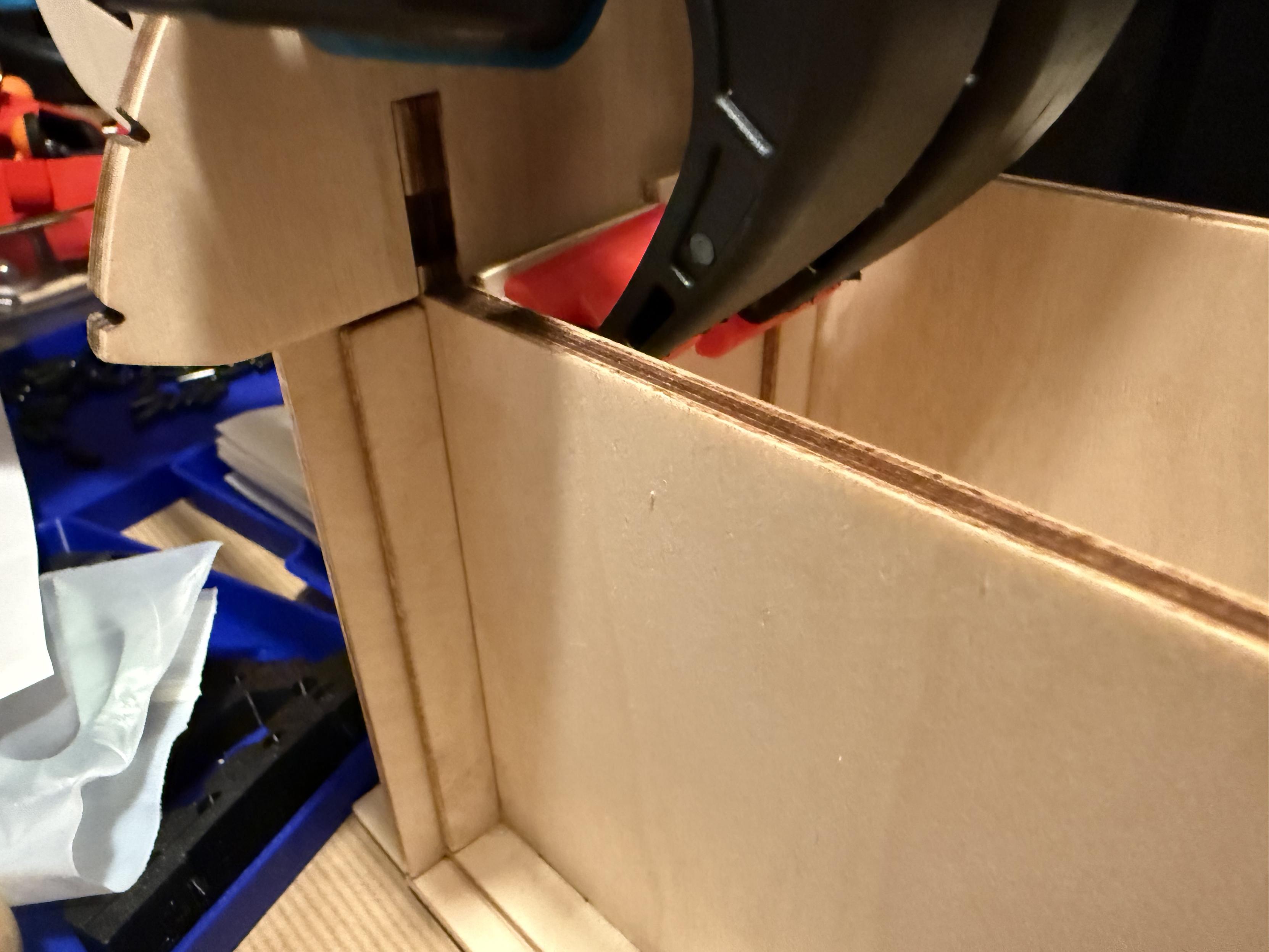
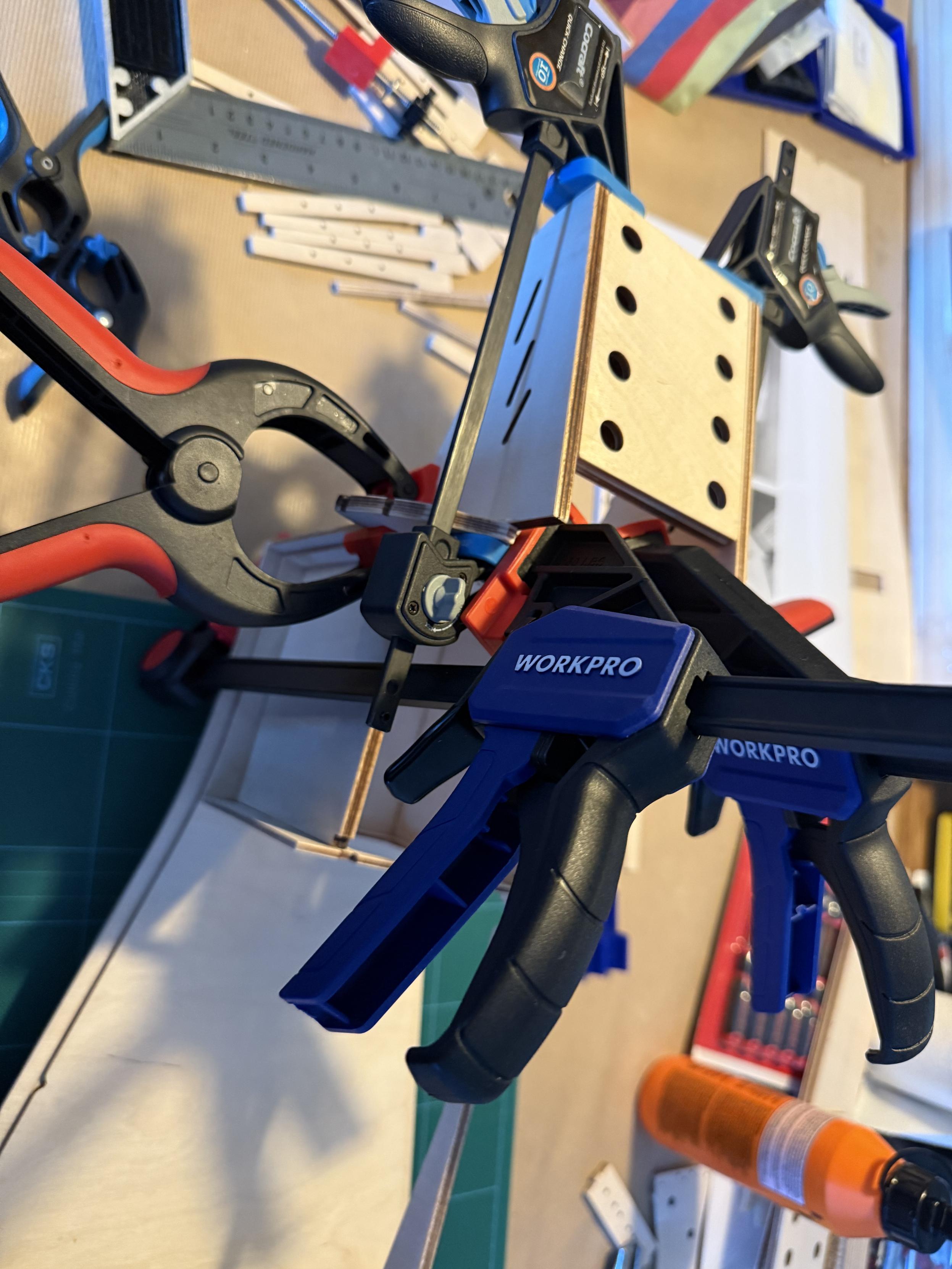
#Tag
Some photos of gluing together some parts om the head, and there were twenty clamps to glue together the sides of the body.



Writing a commandline tool in #Fortran:
https://www.draketo.de/english/free-software/fortran
In case you want to broaden your #programming skills. Fortran seems to be making a comeback (currently 11 in the Tiobe index: https://www.tiobe.com/tiobe-index/fortran/ ).
This is from 2017, written at the end of my Physics PostDoc where I used quite a bit of Fortran and learned to appreciate it much more than I expected.
Today I added the first coat of polyurethane to the smaller pieces. I have to wait at least 12 hours between each coat, so it’s going to take a few days to finish them. Once those are done, I’ll start on the body. I want to wait until it has dried for a few days before I start adding coats to it.
I’ve added three coats of polyurethane to the keybox, keybox lid and some other parts. I hope that will be enough, it looks pretty thick.
I just added the first coat to the main body, and it’s starting to look really good.
Apparently it’s going to take two weeks for the polyurethane to harden fully. Since I’m going away to London for a few days next week that seems like good timing.
I’ve stained the body with a light brown color. The test piece I did was a bit too light, making it almost orange, so I tried to leave more of the dark brown base coat. I’m going to add another coat of the light brown color tomorrow, and then I need to start adding coats of polyurethane. I’m planning on doing at least three coats, maybe four. And it needs to dry for 12 hours between each coat, so it’s going to take a while.
Today I added the first coat of polyurethane to the smaller pieces. I have to wait at least 12 hours between each coat, so it’s going to take a few days to finish them. Once those are done, I’ll start on the body. I want to wait until it has dried for a few days before I start adding coats to it.
Now the main part of the body of the hurdy gurdy is complete and it’s ime to stain it. After sanding everything I added a layer of walnut brown stain that I then sanded down again. Now it’s time to add the final stain color, which is going to be a lighter brown color.
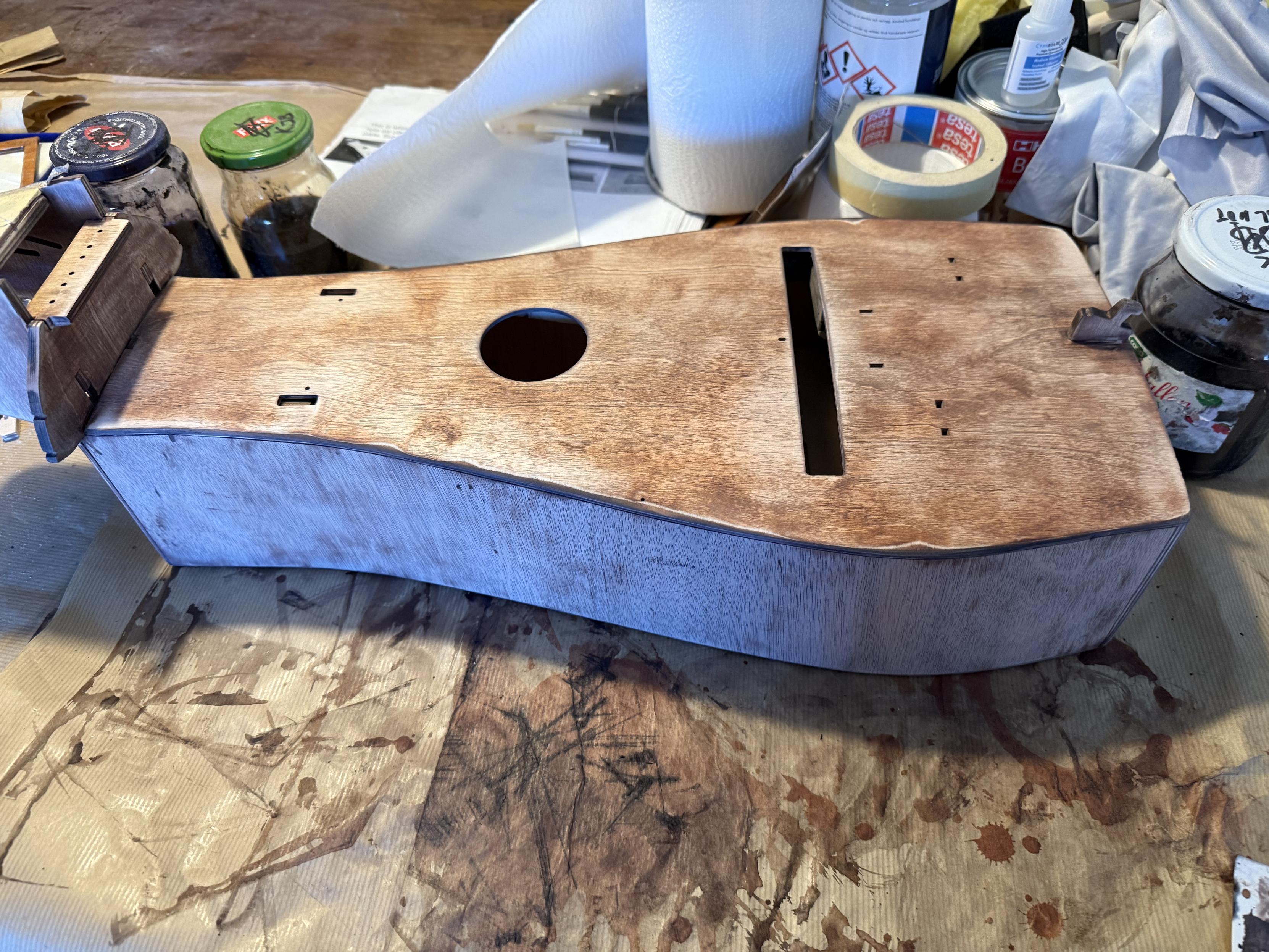
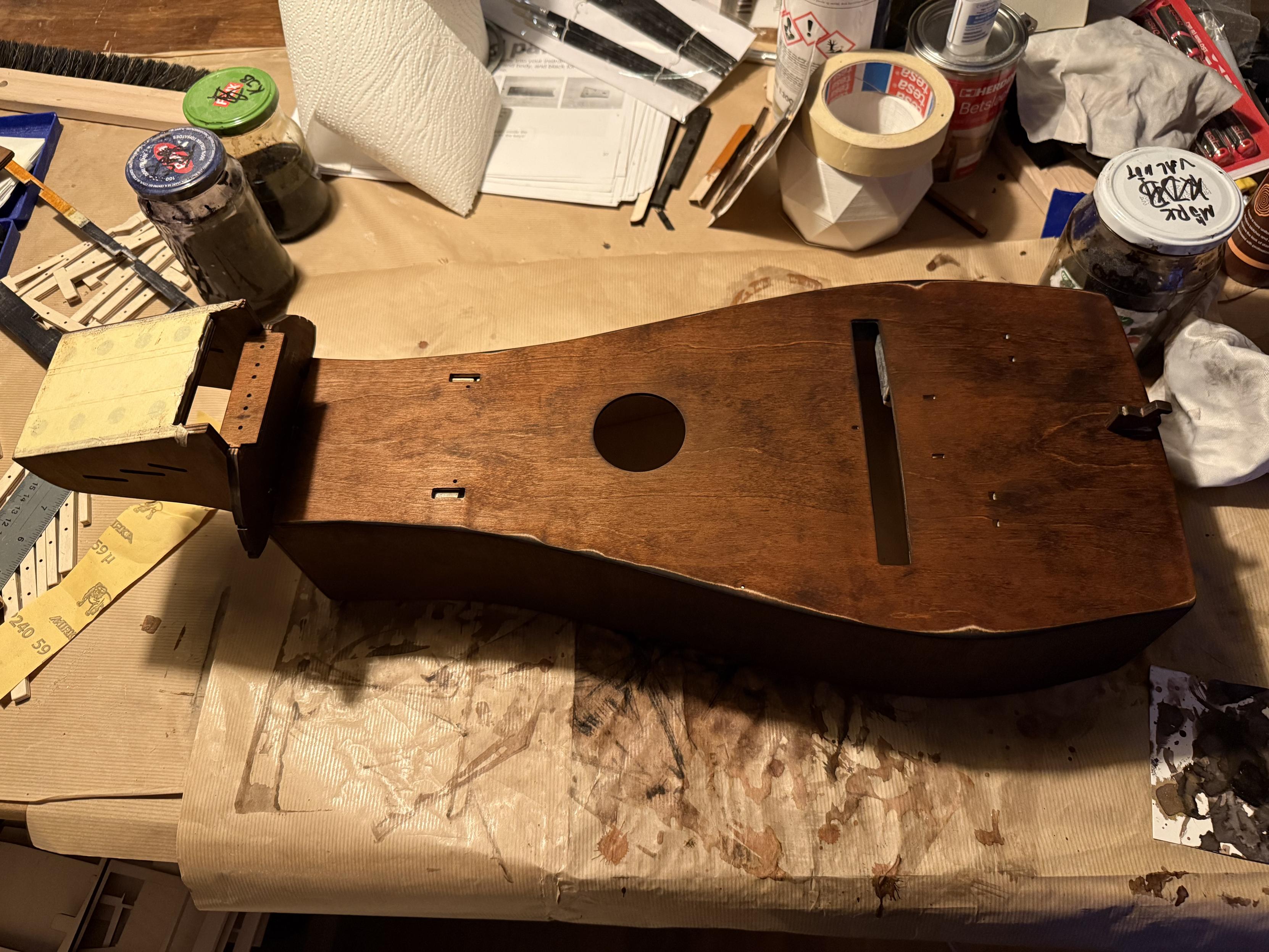
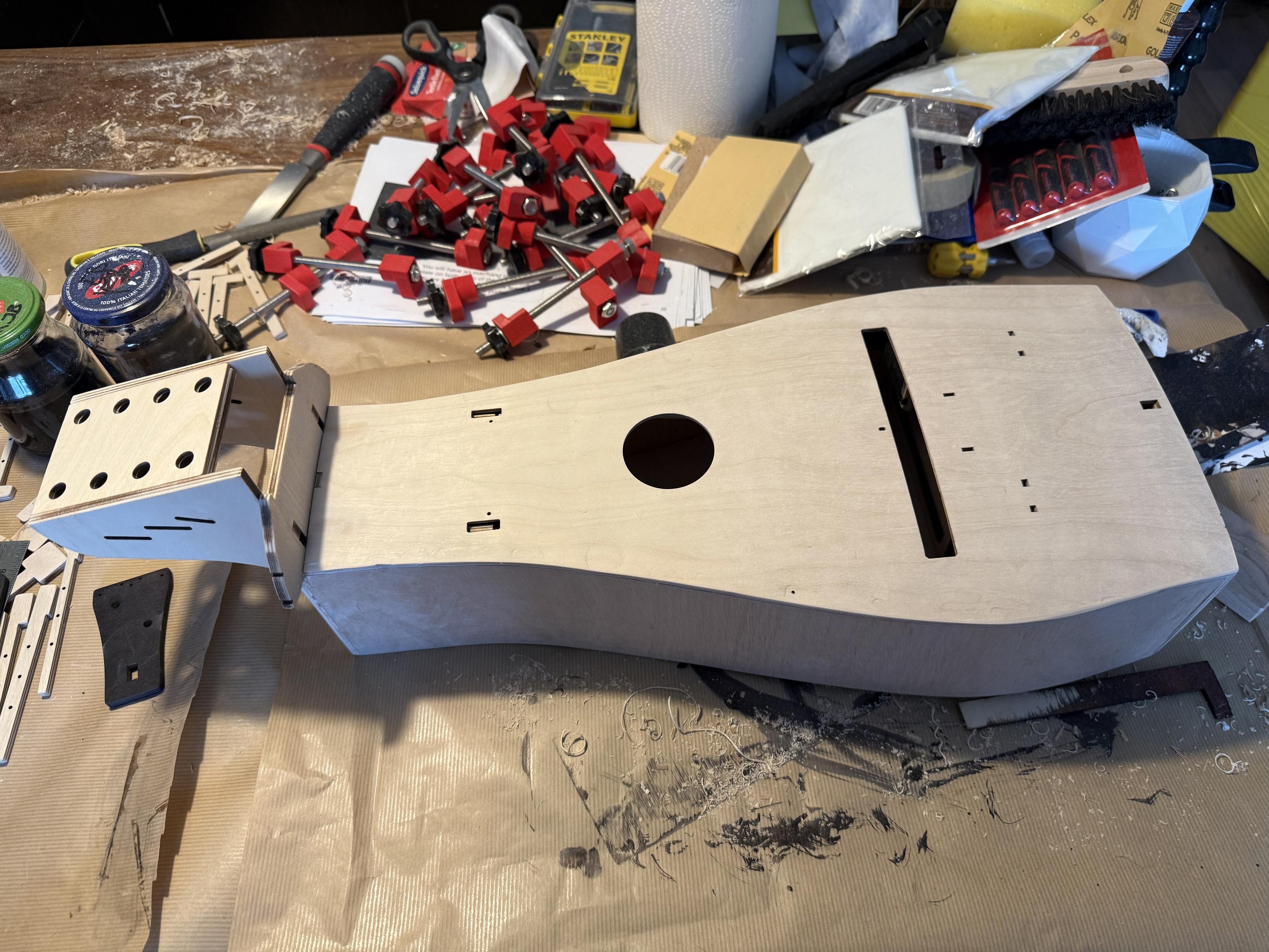
I’ve stained the body with a light brown color. The test piece I did was a bit too light, making it almost orange, so I tried to leave more of the dark brown base coat. I’m going to add another coat of the light brown color tomorrow, and then I need to start adding coats of polyurethane. I’m planning on doing at least three coats, maybe four. And it needs to dry for 12 hours between each coat, so it’s going to take a while.
It was finally time for the scariest part of the hurdy gurdy build. Bending the top plate of the body. I placed a short wood piece along the length of it and tie long cable ties around it. The whole thing was then placed in water for about four days, while continuously tightening the cable ties every now and then.
I could then glue it to the body with lots and lots of glue clamps. I did a dry fitting first to figure out where to place clamps and how to get it to be placed correctly.

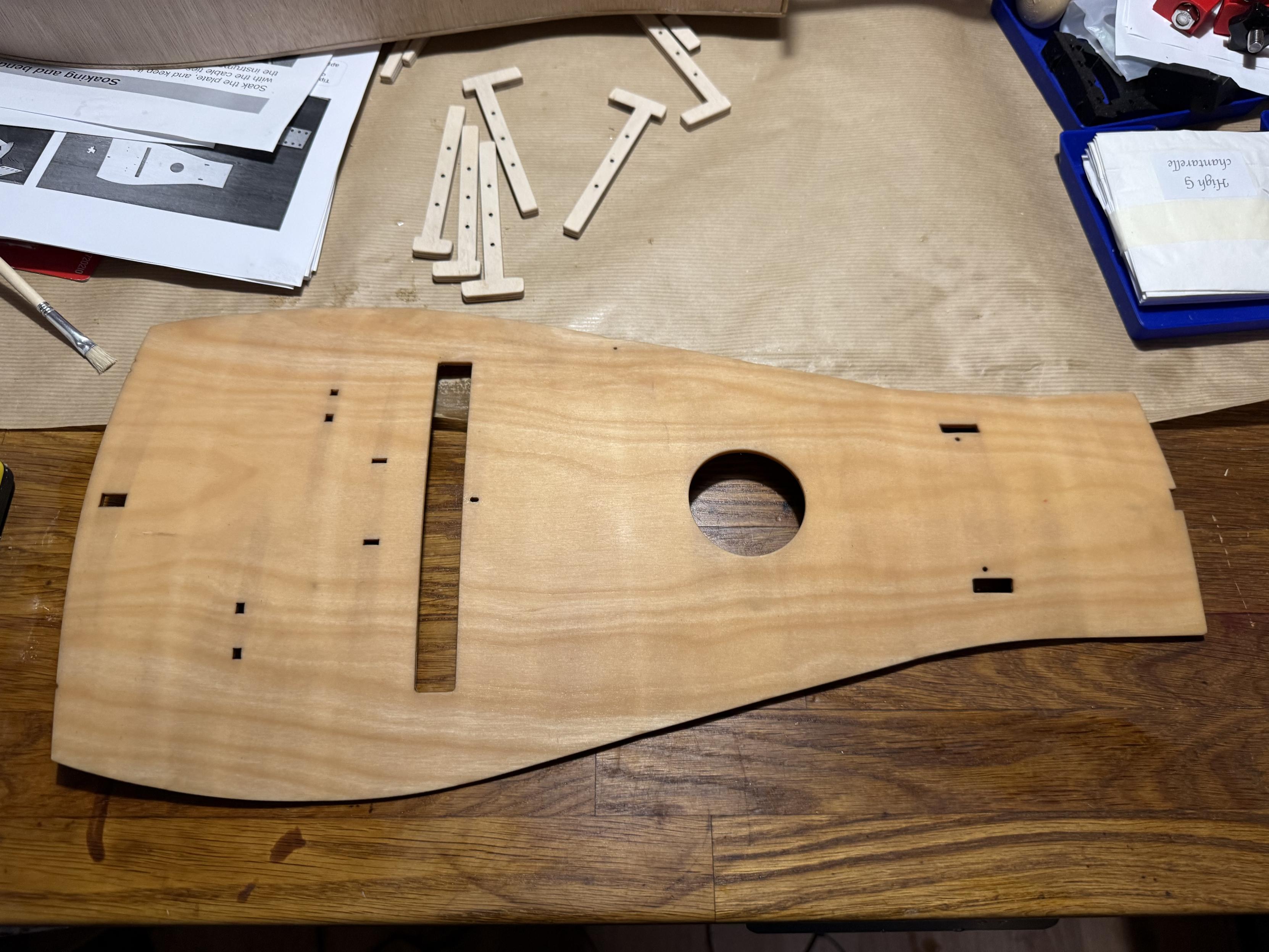
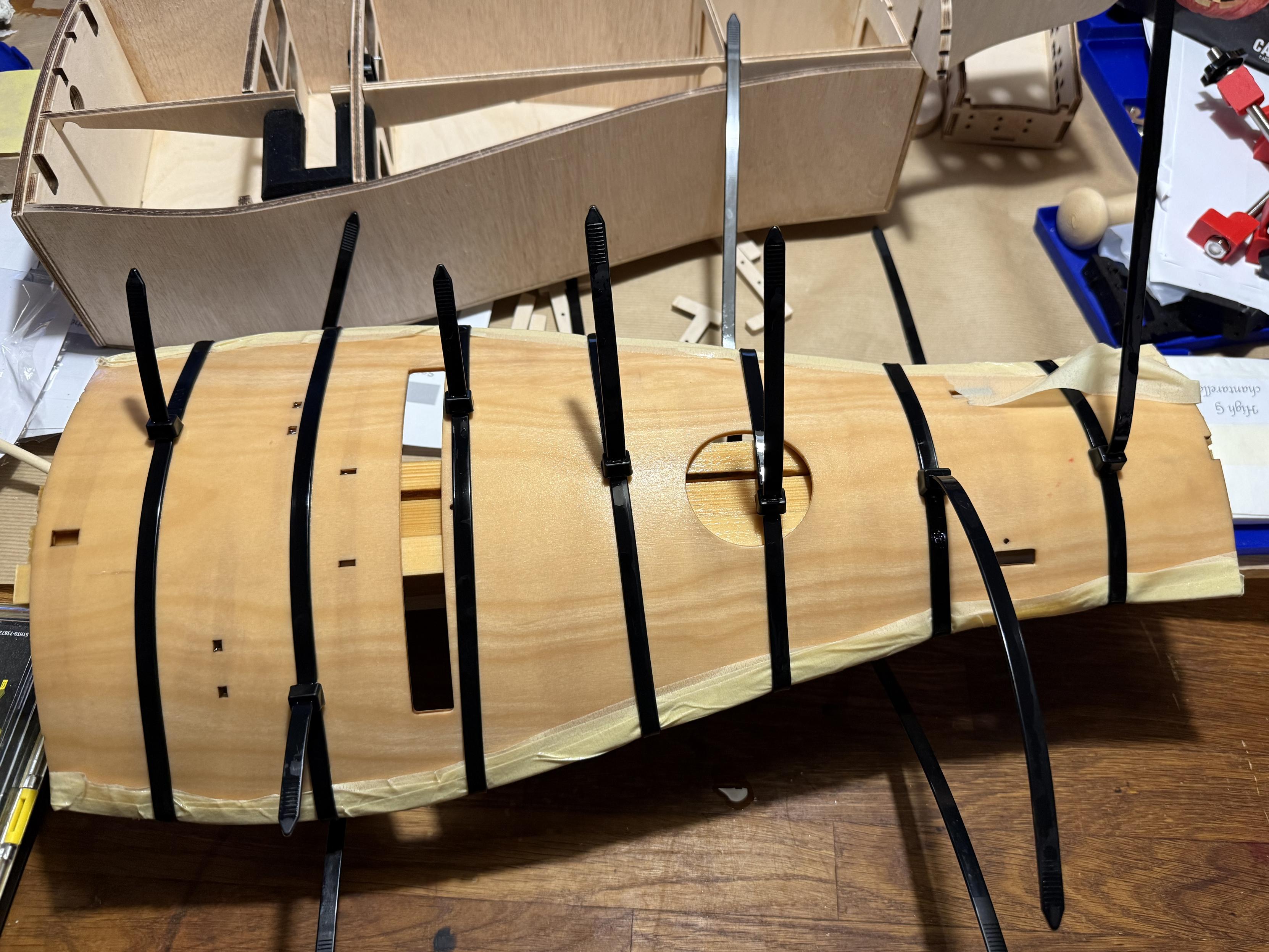
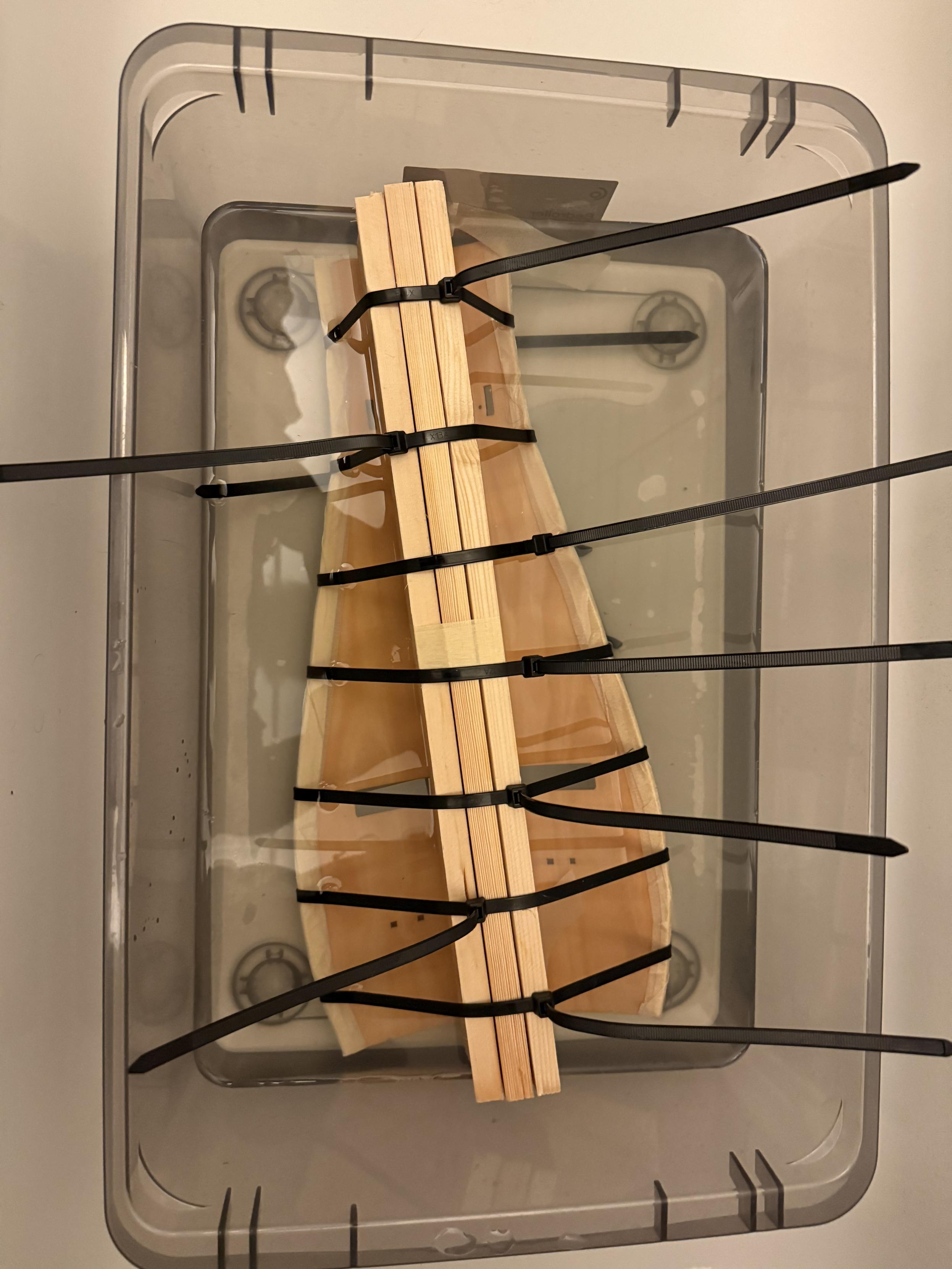
Now the main part of the body of the hurdy gurdy is complete and it’s ime to stain it. After sanding everything I added a layer of walnut brown stain that I then sanded down again. Now it’s time to add the final stain color, which is going to be a lighter brown color.



Some photos of gluing together some parts om the head, and there were twenty clamps to glue together the sides of the body.



It was finally time for the scariest part of the hurdy gurdy build. Bending the top plate of the body. I placed a short wood piece along the length of it and tie long cable ties around it. The whole thing was then placed in water for about four days, while continuously tightening the cable ties every now and then.
I could then glue it to the body with lots and lots of glue clamps. I did a dry fitting first to figure out where to place clamps and how to get it to be placed correctly.




Some photos of gluing together some parts om the head, and there were twenty clamps to glue together the sides of the body.



I’ve been gluing together a few pieces every day on my Nerdy Gurdy build. I had to buy some more clamps as the ones I built won’t work for any thin pieces. There’s a lot of waiting for the glue to dry with this build. But the frame is starting to take shape, which is exciting. But I’ve only done 24 out of 90 pages in the build manual.
As per instructions I’ve now been listening to Eluveitie while building.
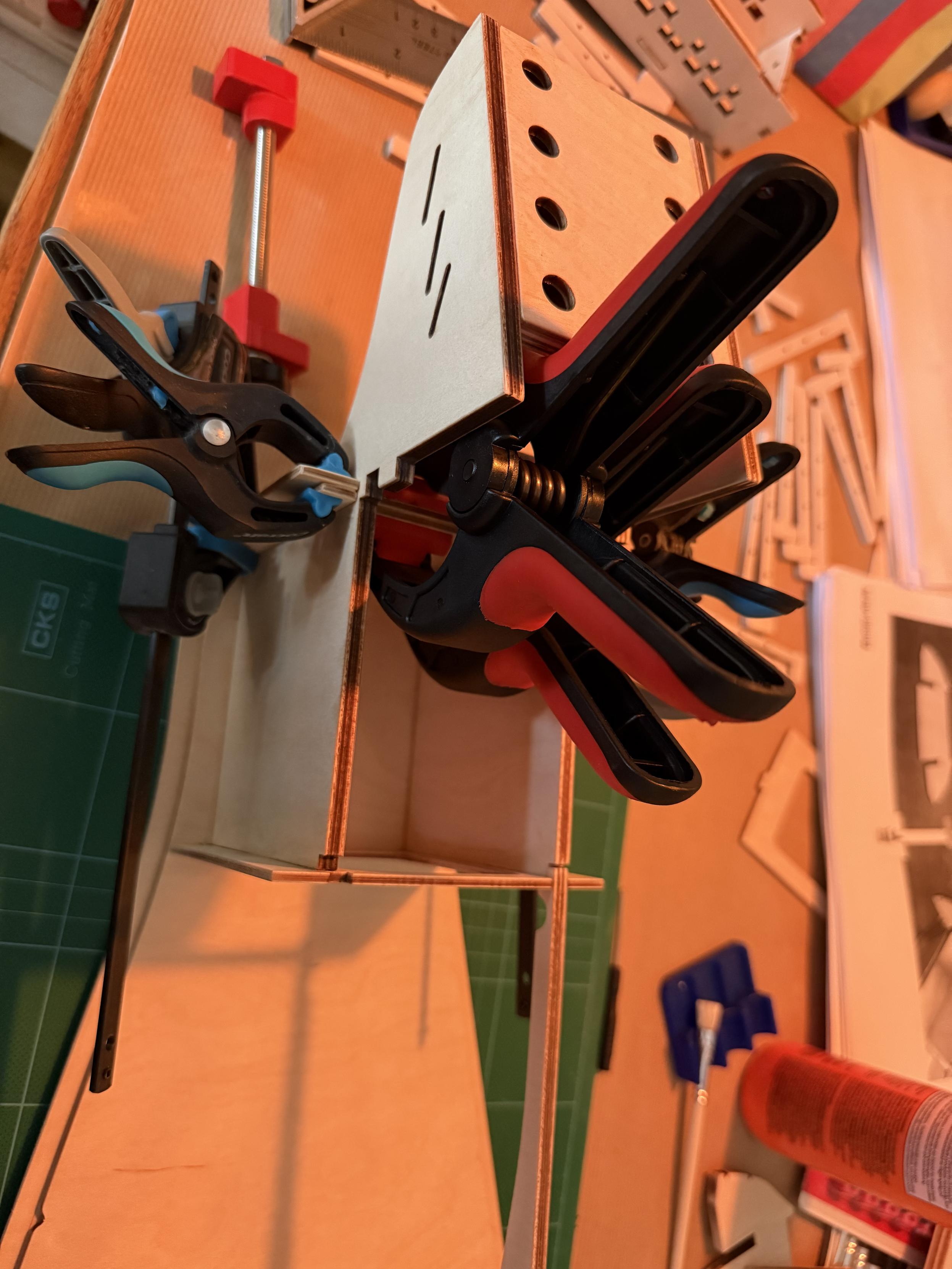

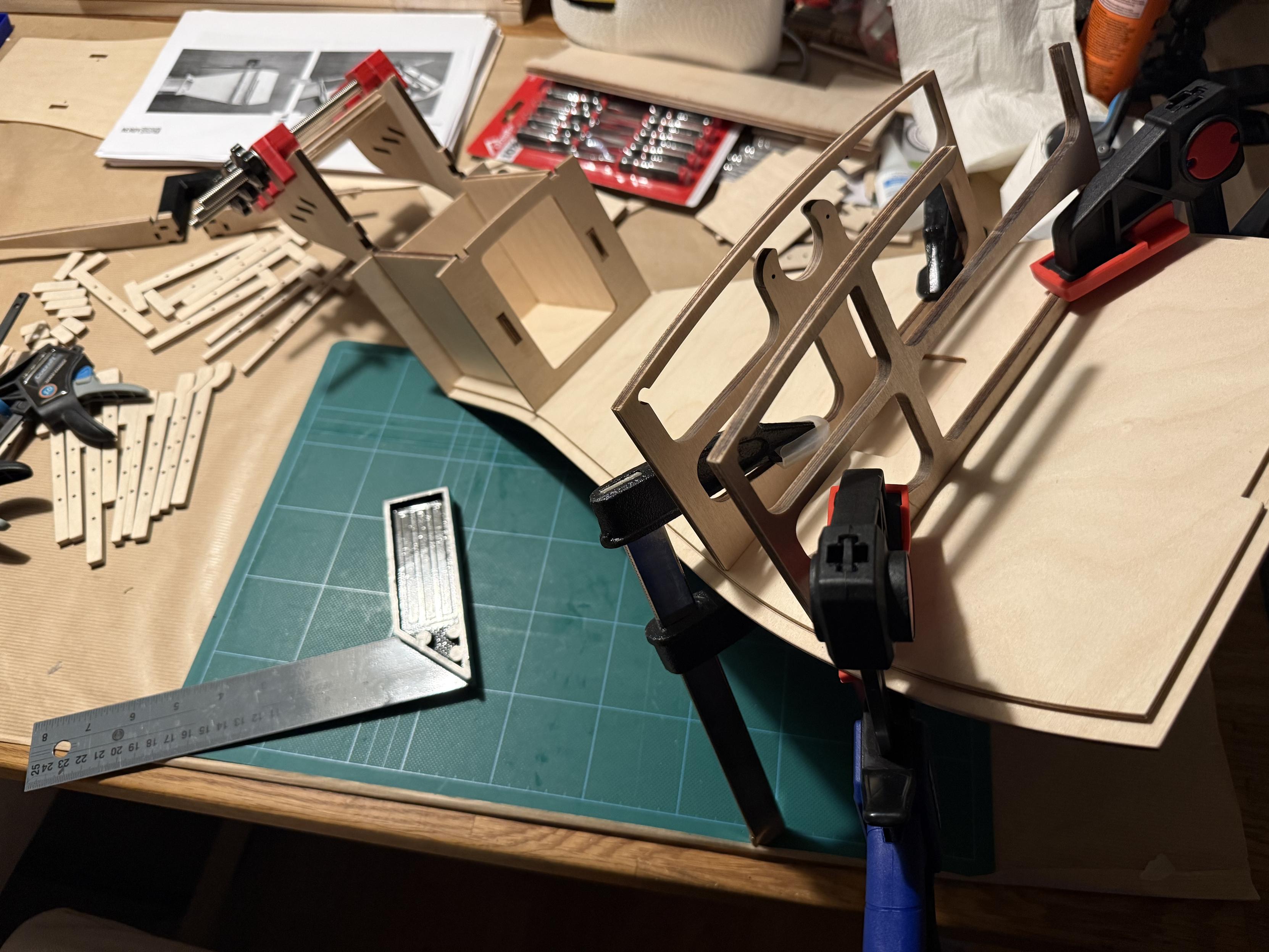
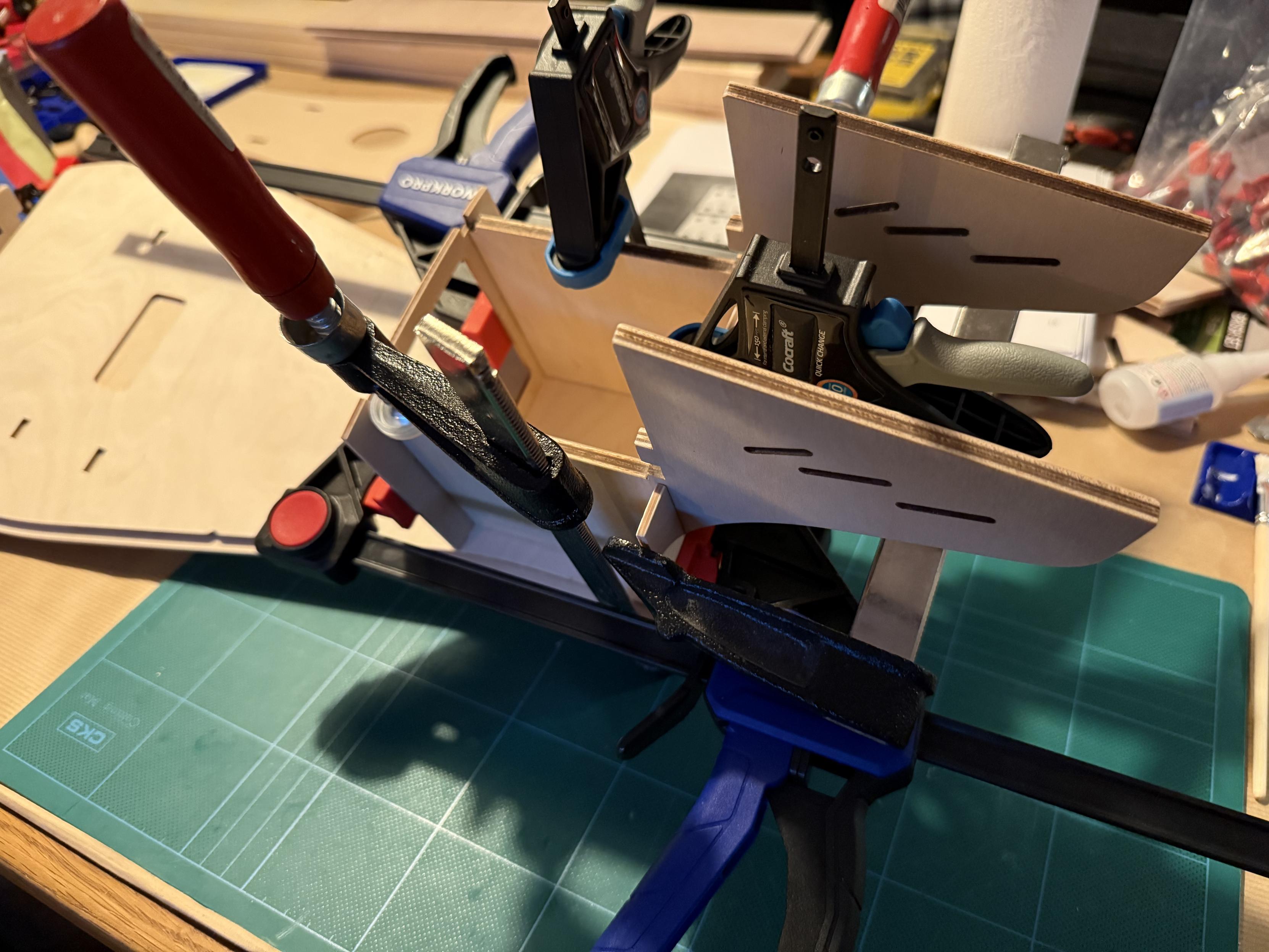
Is Fortran better than Python for teaching the basics of numerical linear algebra? – Dr. Jean-Christophe Loiseau
https://loiseaujc.github.io/posts/blog-title/fortran_vs_python.html
Today I started gluing together the plywood pieces for the hurdy gurdy. I really hope I don’t mess up.
I have finished sanding all the plywood pieces for my Nerdy Gurdy Fortran build. Now I have started dry-fitting the main body to see how all the pieces fit together. It’s starting to look like half of a hurdy gurdy.
I should’ve changed sandpaper earlier, it was completely smooth before I realized it. But the coarse sandpapering of all the plywood pieces is done now.
Next up is doing the whole thing again with a finer grit sandpaper.
While waiting for the kit to arrive, I 3D printed parts for twenty glue clamps. I hope this will be enough. I also have a bunch of small clamps, and a few larger ones.
The glue clamps are made by the same guy who designed the Nerdy Gurdy. The 3D model is available on Thingiverse: https://www.thingiverse.com/thing:6517348
I’ve started to sandpaper the plywood pieces. So far I’ve sanded all 24 keys with a coarse grit sandpaper which took all evening. I will have to go over them again with a finer grit as well.
I’ve started with the Nerdy Gurdy build. I’m taking it slow, today I just removed all the pieces from the plywood. There were quite a lot of pieces, so it did take a while.


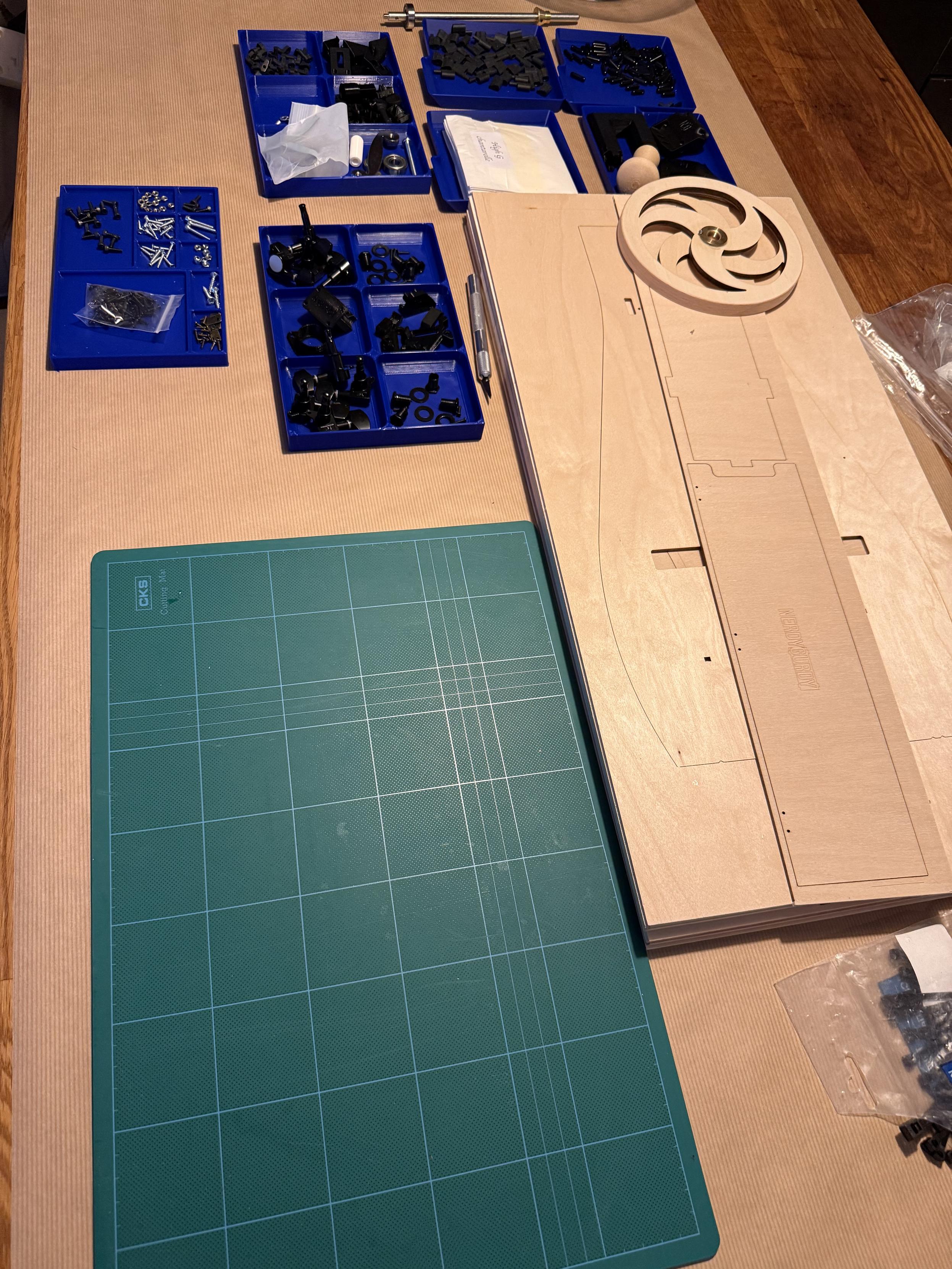
While waiting for the kit to arrive, I 3D printed parts for twenty glue clamps. I hope this will be enough. I also have a bunch of small clamps, and a few larger ones.
The glue clamps are made by the same guy who designed the Nerdy Gurdy. The 3D model is available on Thingiverse: https://www.thingiverse.com/thing:6517348
I received my Nerdy Gurdy Fortran kit today! I’ve checked the contents and everything seems to be included.
I’m going to go slow with this build and try to be as careful as possible. Today was just unpacking and separating all the hardware into separate trays. I need to print another tray with a few compartments to have everything separated.
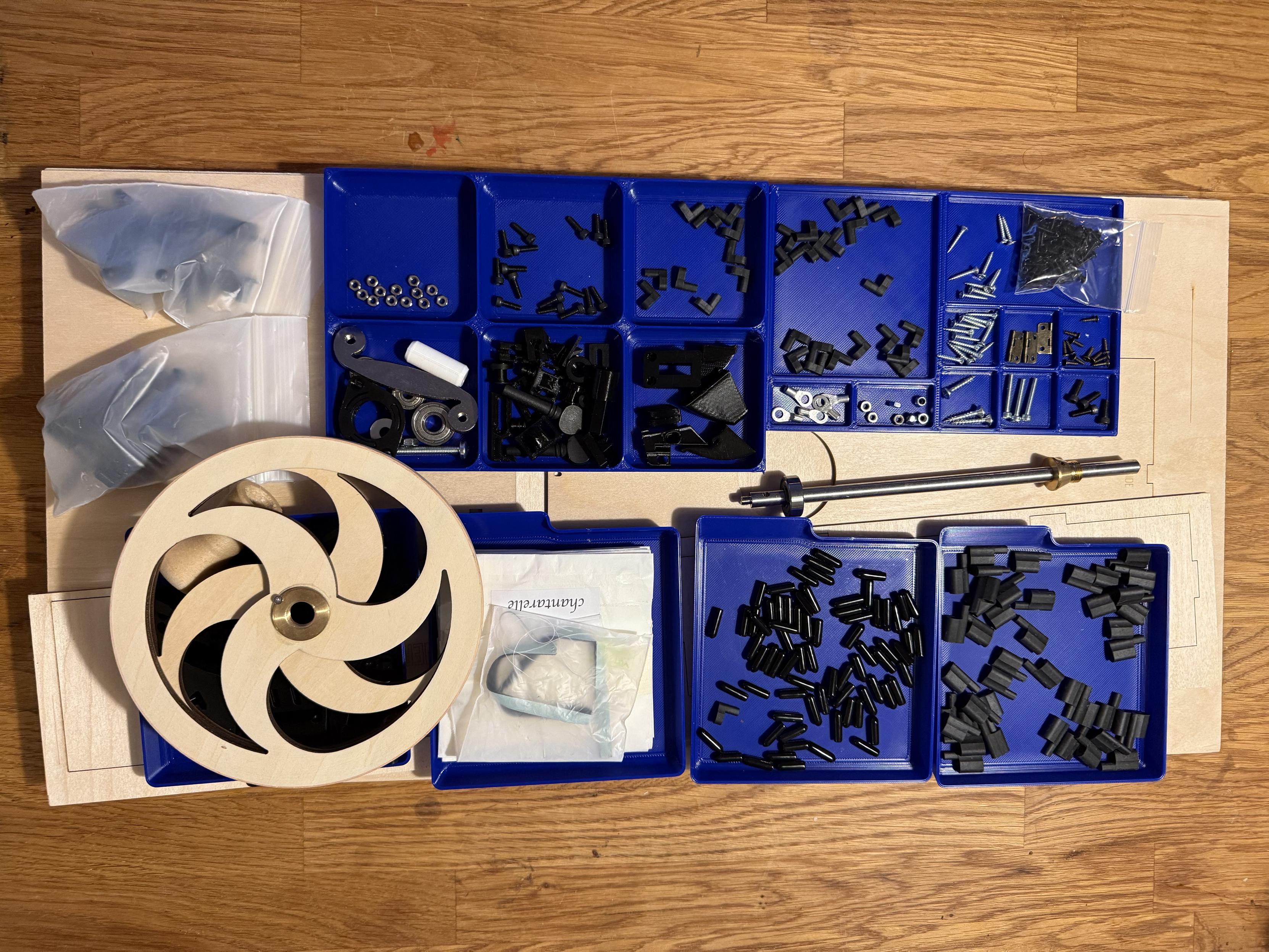
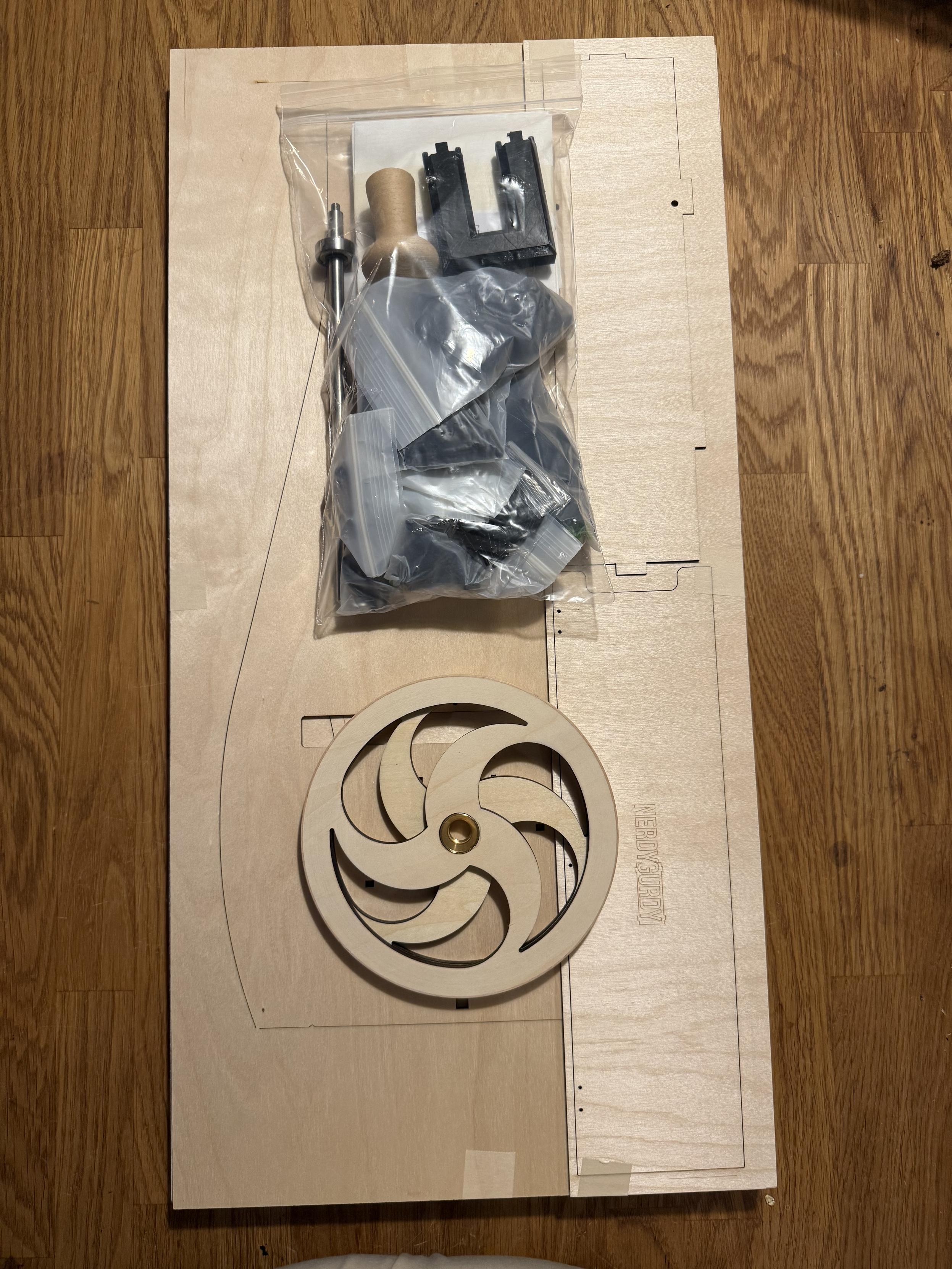
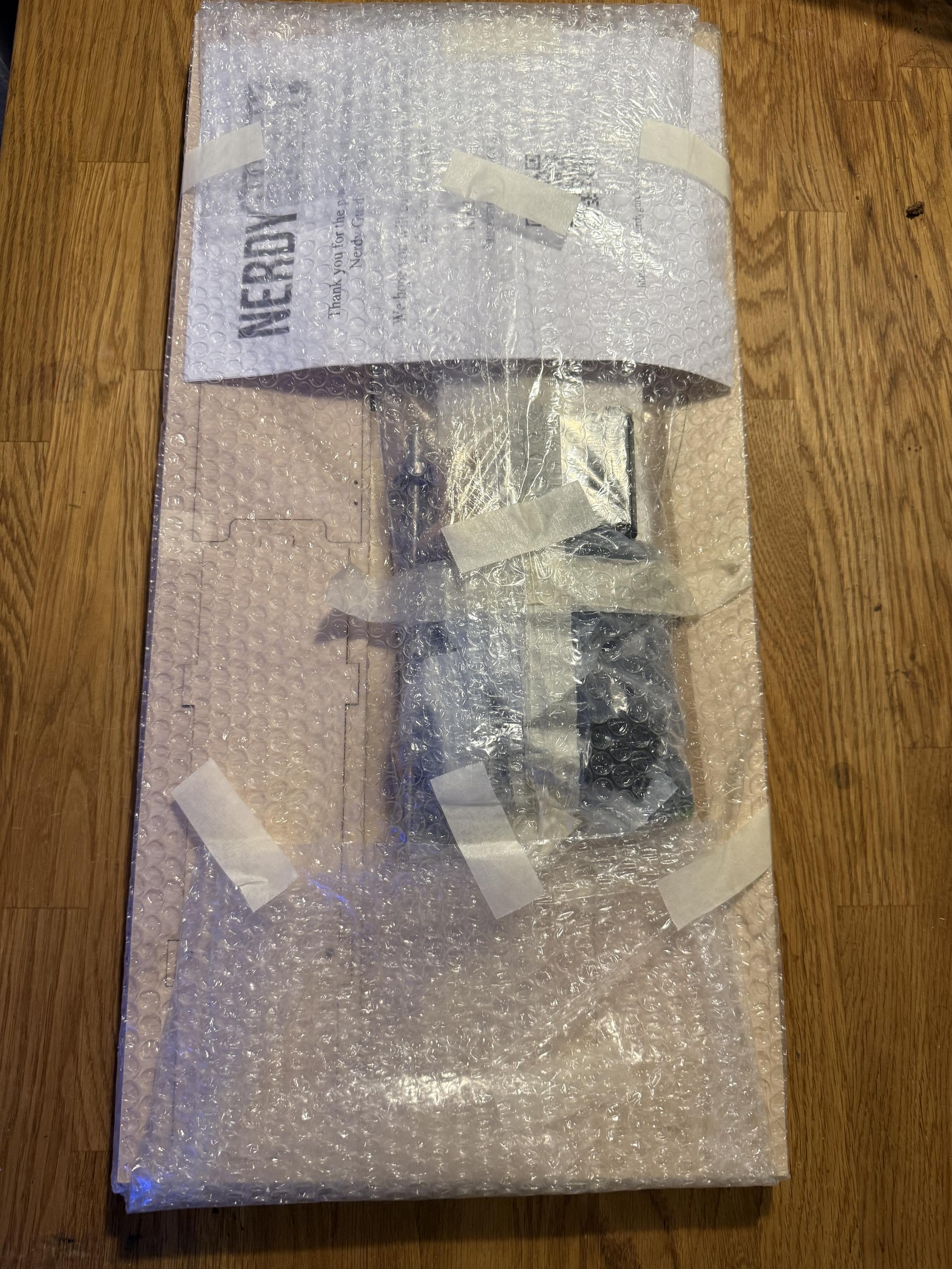
I’ve started with the Nerdy Gurdy build. I’m taking it slow, today I just removed all the pieces from the plywood. There were quite a lot of pieces, so it did take a while.



I’ve been totally nerd sniped by the Nerdy Gurdy. It’s a DIY hurdy gurdy made from 3D printed parts and laser cut plywood. There’s a version on Thingiverse with all the files needed to print and laser cut all the parts (except for some hardware). There are also newer models that can be bought as kits or pre-built.
Since I’m not musical at all, I probably wouldn’t be able to play it. But the build seems doable and a lot of fun.
I received my Nerdy Gurdy Fortran kit today! I’ve checked the contents and everything seems to be included.
I’m going to go slow with this build and try to be as careful as possible. Today was just unpacking and separating all the hardware into separate trays. I need to print another tray with a few compartments to have everything separated.



Writing a commandline tool in #Fortran:
https://www.draketo.de/english/free-software/fortran
In case you want to broaden your #programming skills. Fortran seems to be making a comeback (currently 11 in the Tiobe index: https://www.tiobe.com/tiobe-index/fortran/ ).
This is from 2017, written at the end of my Physics PostDoc where I used quite a bit of Fortran and learned to appreciate it much more than I expected.
A space for Bonfire maintainers and contributors to communicate